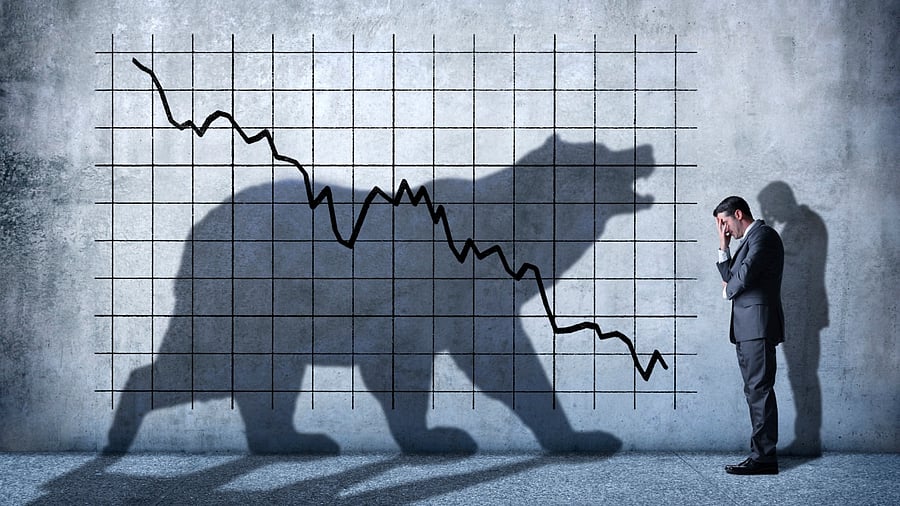
In the world of investing, two animal metaphors dominate the headlines: bulls and bears. Bulls represent progress, hope, and optimism, while bears embody pessimism and negativity. Investors often shy away from the equity markets due to the fear of loss associated with bear markets, which can last for months or even years. However, recent trends suggest that bear markets may not be as relevant as they were in the past, both in terms of frequency and severity. This article explores the changing dynamics of bear markets and their decreasing impact on investors, shedding light on a more stable investment landscape.
Understanding bear markets
A bear market is characterised by a significant stock market decline of more than 20 per cent accompanied by heightened volatility. Investors who endure this period often experience fear and anxiety as they witness their savings plummet over a relatively short time frame. Recovery from a bear market can be a challenging and uncertain journey, as investments may continue to decline further.
Historical context: Bear markets in India
Over the past two decades, India has witnessed two notable bear cycles—the financial crisis in 2008 and the Covid-19 crisis in 2020. This is a stark contrast to the 1980s and 1990s when the Indian markets were still maturing and more vulnerable to external shocks, resulting in higher volatility. For instance, investors faced extended periods of bear markets in 1993 due to the Harshad Mehta scam and in 2001 and 2002 following the dot-com bubble burst.
Decreased frequency and severity of bear markets
In the past 15 years, bear markets have become less frequent and less severe. To put this into perspective, investors spent an average of approximately 110 days per year in bear markets during the 1980s and 1990s. However, following the global financial crisis in 2008, this number dropped to 55 days per year in the 2000s. The subsequent decade, the 2010s, exhibited remarkable stability, with investors experiencing bear markets for just 13 days per year on average. Even with the Covid-19 crisis in 2020 and recent bouts of volatility, the current decade has recorded a mere 8 days per year of bear markets.
Moreover, recoveries from bear markets have become increasingly swift, indicating a faster return to market stability and growth.
Factors contributing to market stability
The improved stability of financial markets can be attributed to several key factors:
1. Robust regulatory framework: Regulatory oversight has significantly increased, ensuring the protection of investors’ interests. Market regulators have demonstrated a willingness to intervene swiftly to prevent issues from escalating into full-blown crises. Examples include government interventions during the financial crisis to bail out banks and the rapid increase in government spending following the Covid-19 crisis.
2. More efficient markets: Today’s markets are far more efficient than ever before, primarily due to easy access to real-time information and increased participation from both retail and institutional investors. As a result, market dislocations tend to be short-lived, minimising the impact on investors.
3. Improving investor behaviour: The substantial growth of Systematic Investment Plans (SIPs) in recent years demonstrates that investors are adopting a more disciplined approach to investment. They are also increasingly aware of the risks associated with the stock market, holding diversified portfolios and maintaining longer-term investment positions.
A new investment landscape
Investors can take solace in the fact that the risk of a primary bear market is now lower than in the past. This realisation should reassure those concerned about the potential impact of a market downturn, especially given the current global economic uncertainty and the possibility of rate hikes.
However, while the risk of a bear market has diminished, market volatility may still occur. Investors who maintain well-diversified portfolios and possess the patience to stay invested for the long term are better equipped to navigate any temporary market fluctuations.
In summary, the investment landscape has witnessed a positive shift, with bear markets becoming less frequent and less severe. This encouraging trend, coupled with a more robust regulatory framework, efficient markets, and improving investor behaviour, signifies a more stable and investor-friendly environment. By staying informed, diversified, and focused on long-term goals, investors can confidently navigate the evolving dynamics of the market and capitalise on new opportunities.
(The writer heads passive funds business at Motilal Oswal AMC)